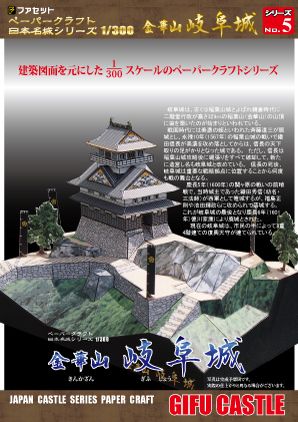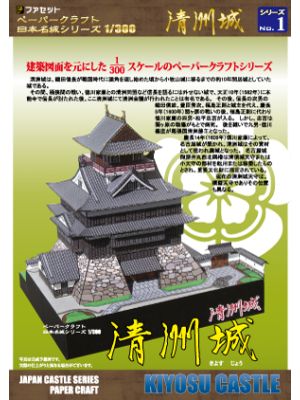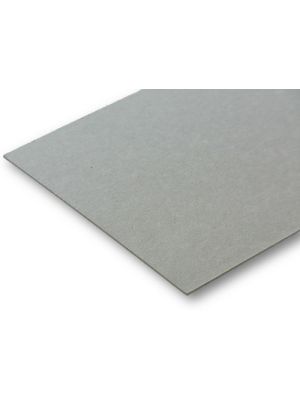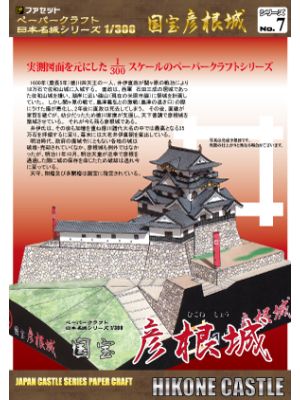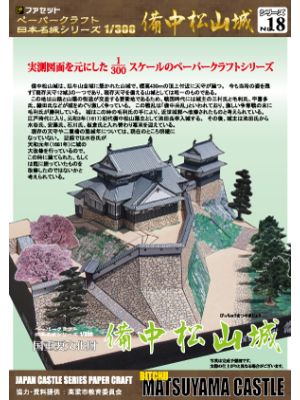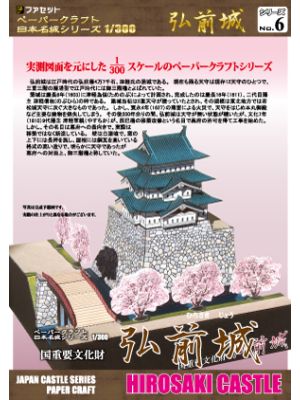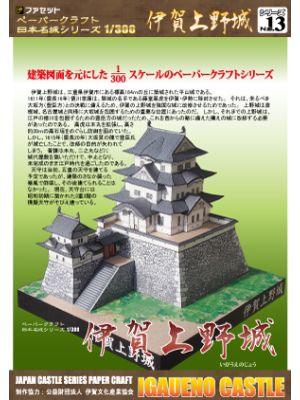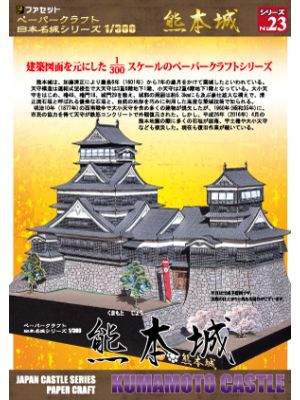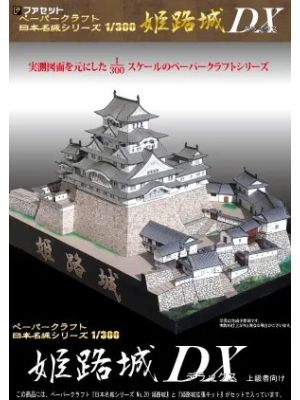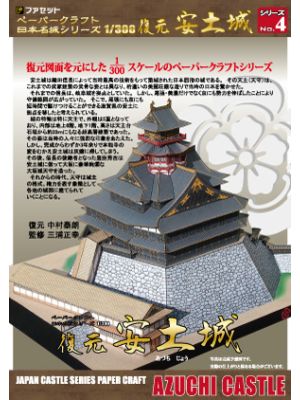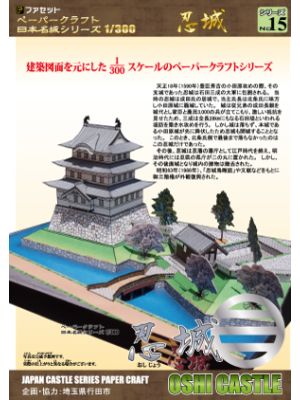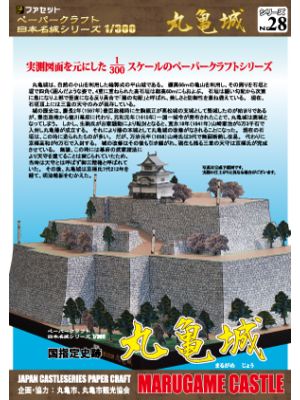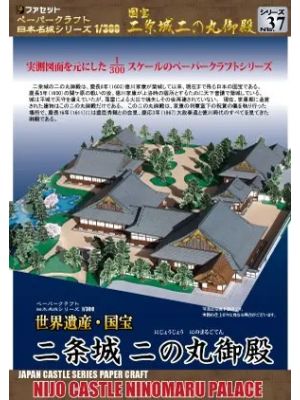Gifu Castle
Scale: 1/300
Skill Level: medium
Size (LxWxH): 116x167x97 mm (4x6x3 inch)
Gifu Castle, the site where Oda Nobunaga sought to unify the nation. The majestic presence of Mt. Kinka, dominating the landscape, has been meticulously replicated in diorama form as a 1/300 scale paper craft.
| Product type | Papermodel |
|---|---|
| Manufacturer | Facet |
| Scale | 1/300 |
| Designer | Shigeru Ishihara |
| Difficulty | medium |
| Sheet size | DIN A4 |
| Sheets | 2 |
| Parts | 39 |
| Length | 116 mm (4.57 inch) |
| Width | 167 mm (6.57 inch) |
| Height | 97 mm (3.82 inch) |
| Bauanleitung | Pictures |
Gifu Castle, originally known as Inabayama Castle, is believed to have originated during the Kamakura period (around 1201), when the Nikaido administration established a fort on Mt. Inaba (also known as Mt. Kinka). During the Sengoku period, it was further developed by notable figures such as Dosan Saito and Nobunaga Oda, serving as a residence for military commanders.
The castle tower, situated atop the 329-meter-high mountain, offers a panoramic view of the Nobi plain from its observation deck on the 4th floor. The region surrounding Gifu City, known as Mino, has long been regarded as strategically significant and a pivotal transportation hub, earning the saying, "those who control Mino control the world."
Upon entering the castle in the 10th year of Eiroku (1567), Oda Nobunaga renamed the area previously called Inokuchi to "Gifu," ushering in a period of prosperity with bustling markets and commerce. Following Nobunaga's relocation to Azuchi Castle, Gifu Castle saw successive occupants like Oda Nobutada and Ikeda Terumasa (later the lord of Himeji Castle). However, the castle was eventually abandoned in 1601, with its tower, turrets, and stone walls relocated to Kano Castle, marking the end of its primary role.
In 1910, the castle was reconstructed as a three-story wooden mock tower, but tragically succumbed to fire in 1943. Subsequently, it was rebuilt in 1956 using reinforced concrete, now boasting three and four stories. Following extensive renovations in 1997, it stands in its current form, serving as a historical landmark to this day.


 Deutsch
Deutsch
